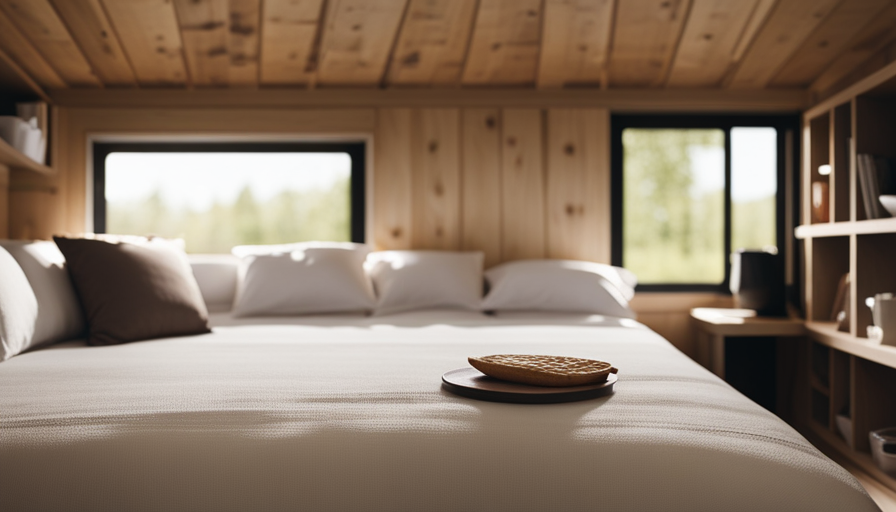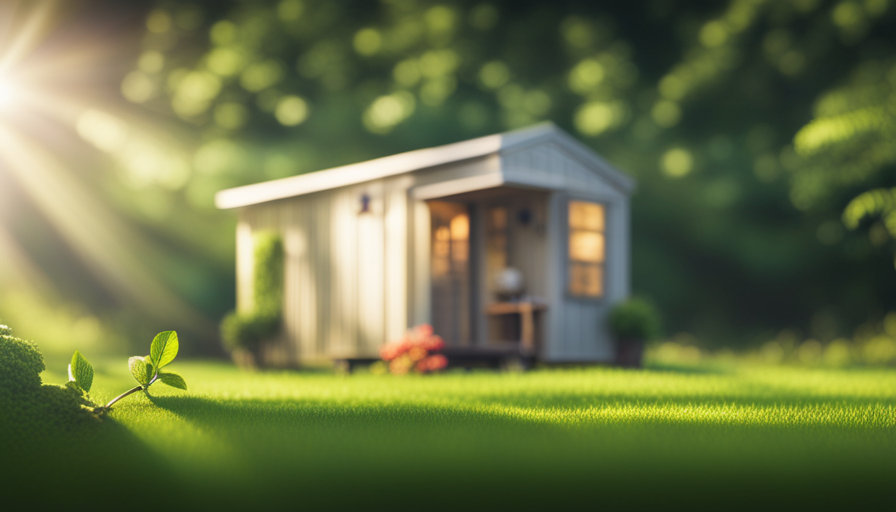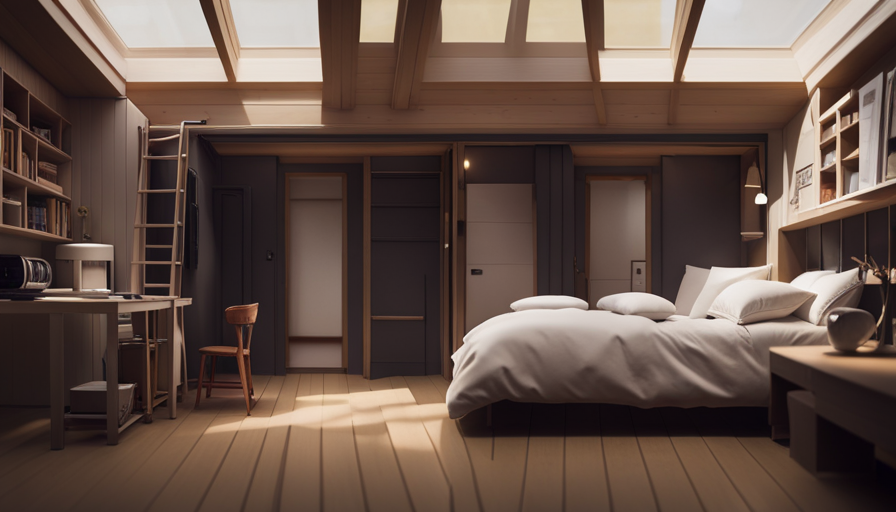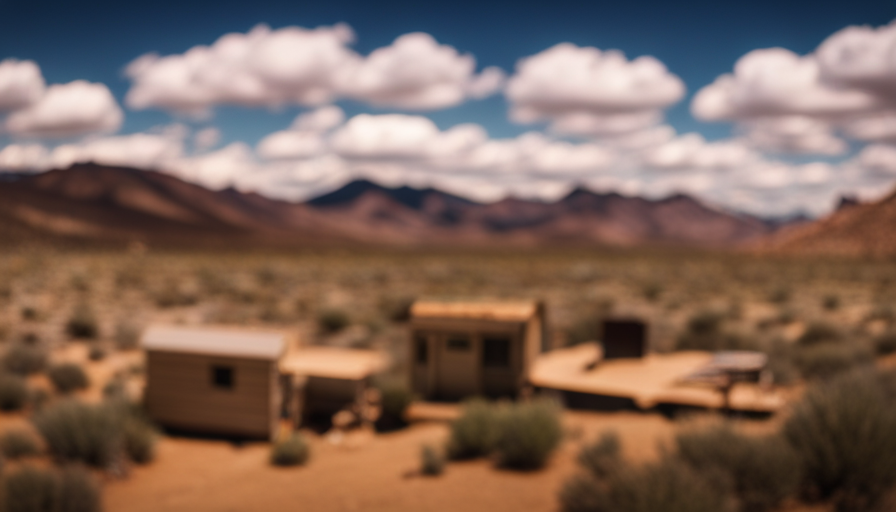Where can I find a location for my tiny house nearby?
This is a question that many individuals interested in the tiny house movement often find themselves asking. As someone who has gone through the process of finding a suitable location for my own tiny house, I understand the challenges and frustrations that can arise.
Fortunately, there are several options available to those looking to find a place to park their tiny home. In this article, I will provide you with a comprehensive guide on how to locate the perfect spot for your tiny house.
From researching local zoning laws and regulations to exploring tiny house communities and villages, I will cover various avenues you can explore. Additionally, I will discuss contacting local RV parks and campgrounds, reaching out to landowners for private land rental, and considering backyard and granny flat opportunities.
Whether you are looking to rent or purchase a spot, this article will equip you with the knowledge and resources to find the ideal location for your tiny house near you.
Key Takeaways
- Research local zoning laws and regulations
- Explore tiny house communities and villages
- Contact local RV parks and campgrounds
- Reach out to landowners for private land rental
Research Local Zoning Laws and Regulations
It’s essential to research and familiarize yourself with the local zoning laws and regulations if you’re wondering where you can put your tiny house near your current location.
Each city and county may have its own set of rules regarding the placement of tiny houses. Some areas may have zoning exemptions that allow for the placement of tiny houses on residential properties, while others may require specific permits or variances. It’s important to explore zoning exemptions that may apply to your situation and understand the requirements and limitations they may impose.
To navigate through the complex world of zoning laws, it’s advisable to seek legal advice from a professional who specializes in real estate or land use. They can help you understand the specific regulations in your area, provide guidance on the process of obtaining permits or variances, and ensure that you comply with all legal requirements.
Once you have a good understanding of the zoning laws and regulations, you can then explore tiny house communities and villages as potential locations for your tiny house. These communities often have their own set of rules and regulations, but they can provide a supportive and like-minded community for tiny house enthusiasts.
By researching local zoning laws, seeking legal advice, and exploring tiny house communities, you can find the perfect location for your tiny house near your current area without compromising on legal requirements or community support.
Explore Tiny House Communities and Villages
I’ve been doing some research on tiny house communities near me and I’ve found some interesting options. It’s exciting to see that there are already established communities where I could potentially live.
One of the benefits of living in a tiny house community is the sense of belonging and support from like-minded individuals who share a similar lifestyle.
Find Existing Tiny House Communities Near You
Located in various locations across the country, there are over 200 existing tiny house communities where you can put your tiny house near you, offering a unique and close-knit living experience. These communities provide an opportunity to live amongst like-minded individuals who share a passion for tiny house living.
When exploring tiny house co-housing options, you’ll find communities that emphasize sustainability, communal living, and shared resources. Additionally, you can discover tiny house-friendly neighborhoods that not only accommodate tiny homes but also provide essential amenities and a sense of community.
Living in a tiny house community allows you to connect with others who appreciate the minimalist lifestyle, while also enjoying the benefits of shared spaces and social activities. Consider the benefits of living in a tiny house community, such as reduced living expenses, a stronger sense of community, and the opportunity to live more sustainably.
Consider the Benefits of Living in a Tiny House Community
Experience the incredible benefits of living in a tight-knit tiny house community, where you’ll forge meaningful connections, lower your expenses, and lead a more sustainable lifestyle.
One of the key advantages of tiny house living is the strong sense of community support that comes with it. Living in a community of like-minded individuals who value simplicity and minimalism creates a unique bond, where neighbors become friends and support each other in various ways. Whether it’s lending a helping hand with construction projects, sharing resources, or simply being there for emotional support, the sense of belonging is unparalleled.
Additionally, living in a tiny house community allows for shared expenses, such as utility bills and maintenance costs, which can significantly reduce your overall expenses. By living in a smaller space, you also have the opportunity to lead a more sustainable lifestyle, leaving a smaller carbon footprint and embracing a simpler way of living.
Transitioning into the next section, contacting local RV parks and campgrounds is another option worth exploring.
Contact Local RV Parks and Campgrounds
Check out local RV parks and campgrounds near you; they might be the perfect spot to park your tiny house! When looking for a place to put your tiny house, it’s important to consider all your options. Researching local RV parks and campgrounds can be a great starting point.
Many of these places are open to accommodating tiny houses and offer a variety of amenities that can enhance your living experience.
Exploring tiny house communities and villages is a popular choice, but sometimes these communities can be limited in terms of available space or their location may not be ideal for you. That’s where local RV parks and campgrounds come in. These places often have more flexibility in terms of space availability and can offer a wider range of locations to choose from.
When researching local RV parks and campgrounds, be sure to consider factors such as location, amenities, and cost. Look for parks that are conveniently located near your work or other important destinations. Consider what amenities are important to you, such as laundry facilities, showers, or recreational activities. And of course, compare the cost of staying at different parks to find the best fit for your budget.
After exploring local RV parks and campgrounds, the next step is to reach out to landowners for private land rental. This will give you even more options and flexibility in finding the perfect spot to park your tiny house.
Reach out to Landowners for Private Land Rental
If you’re seeking ultimate freedom and flexibility for your tiny house, why not connect with landowners and embark on a private land rental adventure? There are plenty of landowners out there who may be willing to rent out their property for you to park your tiny house. Here are four tips to help you navigate this option:
-
Approaching farmers for land rental: Farmers often have large plots of land that they may be willing to rent out for your tiny house. They may appreciate the extra income and could even benefit from your presence by having an extra set of hands to help with farm chores.
-
Exploring co-housing options: Co-housing communities are becoming more popular, and some of them may have space available for your tiny house. These communities often have shared amenities and a sense of community, which can be a great fit for tiny house owners.
-
Checking local zoning regulations: Before reaching out to landowners, make sure to research local zoning regulations. Some areas may have restrictions on where you can park your tiny house, so it’s important to know the rules beforehand.
-
Building relationships with landowners: When reaching out to landowners, be professional and friendly. Building a good relationship with them can increase your chances of finding a suitable rental opportunity.
Consider backyard and granny flat opportunities as well, where you can potentially rent space from homeowners. These options provide a unique and convenient living arrangement for both parties involved.
Consider Backyard and Granny Flat Opportunities
Consider exploring the potential of backyard and granny flat opportunities, where homeowners may be open to renting out space for your tiny house, providing a mutually beneficial arrangement. Many homeowners have unused space in their backyards or have converted their garages into granny flats, making it a great option for those seeking a place to put their tiny house. Renting a backyard or granny flat allows you to have a more permanent and private location for your tiny house, while also providing homeowners with an additional source of income.
To give you an idea of what these opportunities can offer, let’s compare the two options in a table:
| Backyard Rental | Granny Flat Conversion |
|---|---|
| Affordable | More space |
| Access to amenities | Privacy |
| Potential for a long-term arrangement | Ready-made infrastructure |
| Less rules and regulations | More established community |
By considering these options, you can find a suitable location for your tiny house that meets your needs. Once you have explored the potential of backyard and granny flat opportunities, you can then look into alternative housing programs and initiatives that may be available in your area. These programs can provide additional options for finding a place to put your tiny house and further expand your possibilities for living the tiny house lifestyle.
Look for Alternative Housing Programs and Initiatives
After considering the possibilities of backyard and granny flat opportunities, it’s important to explore alternative housing options and government housing initiatives in order to find the perfect location for your tiny house. These options can provide a range of benefits, such as affordable rental rates and additional support services.
One option to consider is looking into government housing initiatives specifically designed to provide alternative housing solutions. Many cities and towns have programs in place that aim to address the growing demand for affordable housing. These initiatives often include incentives for individuals looking to build tiny houses, such as reduced permit fees or access to land at a lower cost.
Additionally, there are alternative housing programs that focus on sustainable living and community development. These programs often provide land and resources for individuals interested in building tiny houses, while also promoting environmentally friendly practices.
By exploring these alternative housing options and government initiatives, you can not only find a suitable location for your tiny house, but also contribute to a larger movement towards sustainable and affordable housing.
Next, let’s delve into another important aspect of finding the perfect spot for your tiny house: attending tiny house events and workshops.
Attend Tiny House Events and Workshops
Don’t miss out on the opportunity to attend tiny house events and workshops, where you can gain valuable insights and connections to help you find the ideal spot for your cozy abode.
These events provide a platform for tiny house enthusiasts, builders, and designers to come together and share their knowledge and experiences. It’s a chance to learn about the latest trends in tiny house design and eco-friendly living, as well as discover innovative solutions for small living spaces.
At these events, you can attend informative workshops that cover a wide range of topics, such as zoning and regulations, off-grid living, and sustainable building materials. Experts in the field will guide you through the process of planning, designing, and constructing your tiny house. You’ll also have the opportunity to network with like-minded individuals who can offer advice and support throughout your journey.
By participating in these events and workshops, you’ll not only gain valuable insights into the tiny house movement but also build connections that can help you in your search for the perfect location. These events often attract local authorities and organizations that are dedicated to promoting alternative housing options. They can provide you with information on available resources, such as land grants or affordable housing programs.
Transitioning into the subsequent section about ‘utilize online resources and forums,’ attending these events and workshops is just the first step in your journey to finding the perfect spot for your tiny house.
Utilize Online Resources and Forums
When it comes to finding parking opportunities for your tiny house, I highly recommend joining tiny house forums and online communities. These platforms provide a wealth of information and resources, where fellow tiny house enthusiasts share their experiences and recommendations for parking spots.
Additionally, utilizing websites and apps specifically designed for finding tiny house parking can be incredibly helpful in your search. These platforms often allow you to search for parking options based on location, amenities, and availability, making it easier to find the perfect spot for your tiny home.
Join Tiny House Forums and Online Communities
Explore tiny house forums and online communities to connect with like-minded individuals who can offer valuable insights and recommendations on ideal locations near you to park your tiny house. These communities are filled with passionate tiny house enthusiasts who have already gone through the process of finding suitable parking spots for their homes.
By joining these forums and engaging in discussions, you can gain access to a wealth of information about local regulations and zoning laws that may affect where you can place your tiny house. Additionally, you can ask for recommendations on specific areas or neighborhoods that are known to be more welcoming to tiny houses.
Once you have gathered enough information from these online communities, you can move on to the next step of using websites and apps to find tiny house parking opportunities.
Use Websites and Apps to Find Tiny House Parking Opportunities
Check out websites and apps to easily discover various parking opportunities for your tiny home. There are several online platforms dedicated to connecting tiny house owners with available parking spaces. These websites and apps provide a convenient way to find alternative housing options and ensure your tiny house has a place to call home.
Some of these platforms allow you to search for parking spots based on location, amenities, and price, making it easier to find the perfect spot that fits your needs. Additionally, you can read reviews and ratings from other tiny house owners who’ve stayed at these locations, giving you valuable insights before making a decision.
Consider building a tiny house on wheels, as this offers the flexibility to move your home to different parking opportunities as needed.
Consider Building a Tiny House on Wheels
Consider building a tiny house on wheels to easily find a location near you. Building a tiny house on wheels gives you the flexibility to move and explore alternative housing options. It also allows you to consider the financial implications of owning a tiny house. With a tiny house on wheels, you can easily transport your home to different locations, giving you the freedom to find the perfect spot near you.
To further illustrate the benefits of building a tiny house on wheels, let’s compare it to a traditional tiny house on a foundation.
| Building a Tiny House on Wheels | Building a Tiny House on a Foundation |
|---|---|
| Mobility | Fixed Location |
| Can easily find parking spots | Limited to specific areas |
| Flexibility in choosing a location | Restricted by zoning laws |
| Can travel and explore new areas | Limited to one permanent spot |
Building a tiny house on wheels is a practical solution for those who want to live in a tiny house but also want the freedom to move around. It allows you to think outside the box and be creative when it comes to finding a place to park your tiny house.
Think Outside the Box and Be Creative
Get creative and think outside the box when it comes to finding the perfect spot for your tiny house on wheels. There are plenty of unconventional options and creative solutions that you can explore to park your tiny house near you. Here are three ideas to get you started:
-
Community Gardens: Many community gardens have extra space that can be utilized for parking tiny houses. These gardens often have a close-knit community and offer a peaceful and green environment. Plus, you’ll have access to fresh produce and the opportunity to connect with fellow gardeners.
-
RV Parks: While primarily designed for recreational vehicles, some RV parks allow tiny houses on wheels as well. These parks usually offer amenities such as water, electricity, and waste disposal, making them a convenient option for tiny house living.
-
Backyard Rentals: Consider renting a spot in someone’s backyard. There are platforms and websites that connect tiny house owners with homeowners willing to rent out their backyard space. This option allows you to have a private and secure location while also building connections with your neighbors.
By thinking outside the box and being creative, you can find unique and affordable places to park your tiny house on wheels. Explore these options and don’t be afraid to reach out to local communities and homeowners for potential solutions.
Frequently Asked Questions
Can I legally park my tiny house on a public street in my city?
Legally parking my tiny house on a public street in my city can be quite a challenge. Although it may seem like a convenient option, there are potential limitations and restrictions that need to be considered.
Alternative parking options, such as private property rentals or tiny house communities, may be more suitable. It’s important to research local zoning laws and regulations to ensure compliance and avoid any legal issues.
Are there any restrictions on the size or height of a tiny house in my area?
There may be restrictions on the size or height of a tiny house in your area. It’s important to check the tiny house building codes and zoning regulations specific to your location. These regulations usually outline the maximum square footage, height, and other requirements for tiny houses.
It’s essential to comply with these regulations to ensure your tiny house is legal and can be placed in an appropriate location within your area.
Are there any grants or financial assistance programs available for building a tiny house?
Yes, there are grants and financial assistance programs available for building a tiny house, especially if it’s eco-friendly and promotes sustainable living. These grants are specifically designed to support individuals in constructing environmentally friendly housing options. Financial assistance can come in the form of low-interest loans, tax incentives, or direct grants. These programs aim to encourage and incentivize the construction of sustainable and energy-efficient tiny homes.
Can I rent land from a homeowner to park my tiny house on?
Renting land from a homeowner to park my tiny house on is a great option! However, it’s crucial to consider zoning regulations in your area.
Some locations have specific rules regarding tiny houses, including where they can be placed and for how long. Make sure to research and understand these regulations before approaching homeowners.
Additionally, it’s important to have a clear agreement with the homeowner, outlining responsibilities, rent, and any additional terms.
Are there any specific regulations for connecting utilities to a tiny house on private land?
When it comes to connecting utilities to a tiny house on private land, there are certain regulations that need to be followed. These regulations vary depending on the location, so it’s important to check with local authorities.
Generally, you will need to comply with building codes and obtain permits for utility connections. It’s also important to consider factors such as water, sewage, and electricity access.
Working with a licensed professional can ensure that you meet all the necessary requirements.
Conclusion
In conclusion, finding a suitable location for your tiny house requires careful research and exploration. By familiarizing yourself with local zoning laws and regulations, you can determine where tiny houses are allowed in your area.
Additionally, considering options such as tiny house communities, RV parks, backyard rentals, and private land rentals can expand your possibilities. Attending events and utilizing online resources can also provide valuable information and connections.
One interesting statistic to note is that according to a survey conducted by the American Tiny House Association, there are over 10,000 tiny house communities and villages across the United States, offering a variety of options for tiny house enthusiasts.
So, with a little creativity and determination, you can find the perfect spot to park your tiny house and embrace the freedom of minimalist living.
Hi, I’m Emma. I’m the Editor in Chief of Tiny House 43, a blog all about tiny houses. While tree houses are often associated with childhood, they can be the perfect adult retreat. They offer a cozy space to relax and unwind, surrounded by nature. And since they’re typically built on stilts or raised platforms, they offer stunning views that traditional homes simply can’t match. If you’re looking for a unique and romantic getaway, a tree house tiny house might just be the perfect option.










